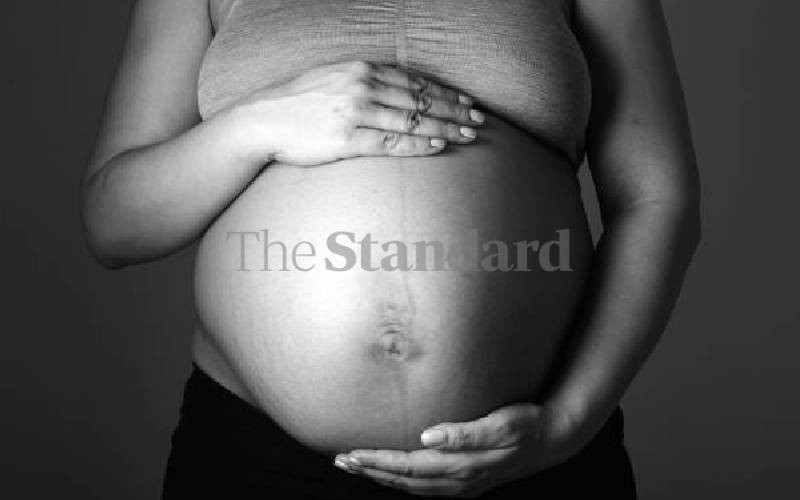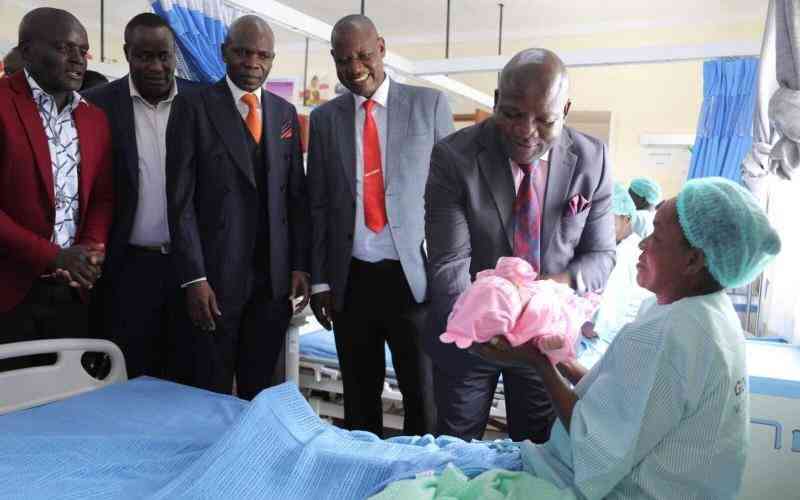Kenya is among the ten most dangerous countries for pregnant women. Between 6,000 and 8,000 women die every year during childbirth; the current maternal mortality rate is 488 deaths per 100,000 live births. Kenya has made little progress in reducing this to achieve the commitment set in the Millennium Development Goals of 147 deaths per 100,000. However, thanks to the introduction of free maternity services for women by the Government last year, Kenya’s maternal death rate may finally begin to fall.
The First Lady Margaret Kenyatta, has emerged as a true champion in this cause. Her drive and resolve has put the spotlight on Kenya’s efforts to reverse this tragic trend.
For this innovative work, Mrs Kenyatta was voted by the United Nations in Kenya as the UN person of the year in 2014, a well-deserved recognition for which I congratulate her. I had the honour of meeting her in September, to discuss a University of California, San Francisco initiative to address pre-term births. I was struck by her knowledge about the current situation and determination to improve maternal, newborn and child health in Kenya. The momentum created by the First Lady’s Beyond Zero Campaign is driving several other important initiatives and changes to policy from a variety of stakeholders to improve Kenya’s MDG 5 report card.
At the 2014 UN General Assembly in September, the Government of Kenya announced that it would increase its health budget from five per cent to 15 per cent of its national budget. And, in August, the United Nations Population Fund, led by its Representative to Kenya Siddharth Chatterjee, spearheaded an important initiative to convene 15 of Kenya’s 47 governors, which represent nearly 98 per cent of the country’s maternal deaths.
The meeting saw a range of partners from the Government, the private sector, the UN community, national and international NGOs, donor countries and the media converge, in advancing maternal health in Kenya. The governors signed a communiqué to end maternal deaths and improve the well-being, protection and health of adolescent girls.
Innovation, investment, commitment, partnerships and leadership, at all levels, must form the cornerstone for advancing and accelerating progress to meet the targets of MDG 5. I urge the governors of Garissa, Homa Bay, Isiolo, Kakamega, Kisumu, Lamu, Mandera, Marsabit, Migori, Nairobi, Nakuru, Siaya, Taita-Tavet, Turkana and Wajir—to lead the fight to end maternal deaths in their respective counties and comply to the commitments made in the communiqué.
The writer is a Professor of Medicine and the Director of the Institute of Global Health Delivery and Diplomacy at the University of California in San Francisco.
 The Standard Group Plc is a
multi-media organization with investments in media platforms spanning newspaper
print operations, television, radio broadcasting, digital and online services. The
Standard Group is recognized as a leading multi-media house in Kenya with a key
influence in matters of national and international interest.
The Standard Group Plc is a
multi-media organization with investments in media platforms spanning newspaper
print operations, television, radio broadcasting, digital and online services. The
Standard Group is recognized as a leading multi-media house in Kenya with a key
influence in matters of national and international interest.
 The Standard Group Plc is a
multi-media organization with investments in media platforms spanning newspaper
print operations, television, radio broadcasting, digital and online services. The
Standard Group is recognized as a leading multi-media house in Kenya with a key
influence in matters of national and international interest.
The Standard Group Plc is a
multi-media organization with investments in media platforms spanning newspaper
print operations, television, radio broadcasting, digital and online services. The
Standard Group is recognized as a leading multi-media house in Kenya with a key
influence in matters of national and international interest.







